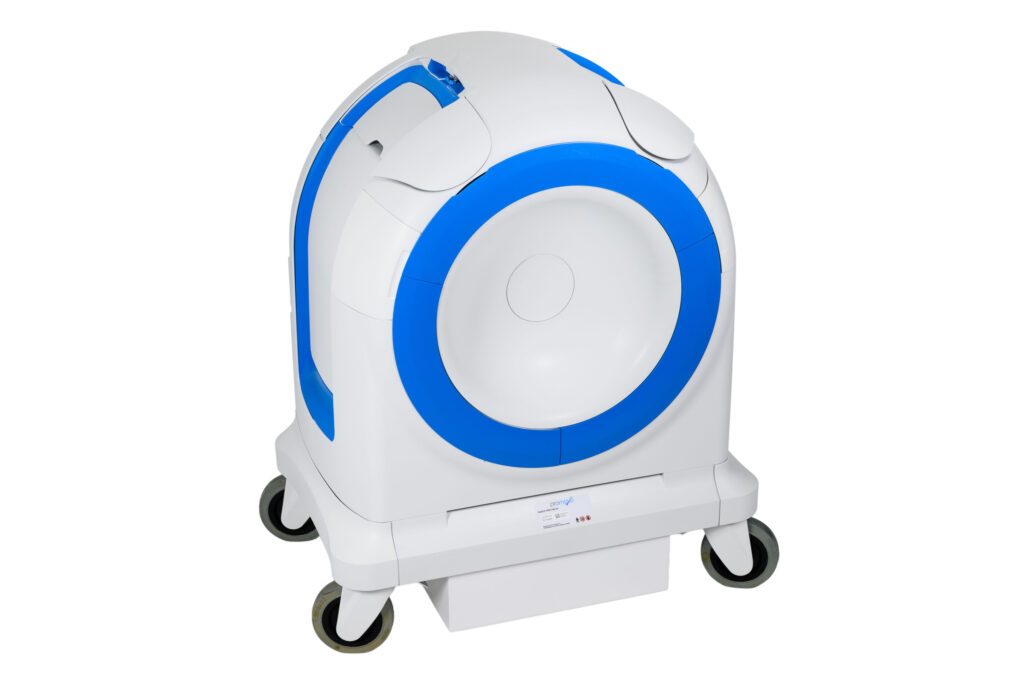
Nearly 1 in 8 men will be diagnosed with prostate cancer at some point. An accurate, early diagnosis is essential to ensure the best possible treatment outcomes. We are proud to offer Promaxo MRI prostate biopsy to improve patient care.
About Promaxo MRI Prostate Biopsy
Promaxo MRI is a portable unit that allows for precise, detailed imaging. It uses the latest in MRI technology and artificial intelligence to accurately map the prostate and allow for a minimally invasive biopsy to be performed.
Other benefits of the Promaxo MRI are:
- Open MRI Design: While traditional MRIs require a trip through a tight, claustrophobic space, the Promaxo is an open MRI. You won’t have to feel trapped or uncomfortable.
- Quietness: Most MRI machines are noisy, but the Promaxo unit is quiet, allowing for a calmer experience.
- Comfort: The technology allows the biopsy process to be minimally invasive. You won’t have to be connected to wires, and there won’t be any probes.

How the Promaxo MRI Works
Getting a prostate biopsy using the Promaxo MRI technology is a multi-step process. You’ll have two separate appointments.
Appointment 1: A pelvic MRI will be performed to get an initial image of your prostate. Then, a radiologist will review the MRI images to identify any areas of concern in the prostate. The data will be synced with the Promaxo MRI unit before your second appointment.
Appointment 2: Your biopsy will be performed at this appointment. First, the Promaxo MRI unit will get new images of the prostate. It will be compared to the original MRI, and your urologist will use all of the information to create a real-time biopsy plan. The prostate biopsy will then be performed using minimally invasive techniques.
Do you need a prostate biopsy?
If your doctor has recommended a prostate biopsy, ask about using technology that ensures the highest precision and accuracy. Promaxo MRI isn’t available everywhere, and you may want to consider choosing cutting-edge care that was designed with comfort in mind.
Call us today to discuss Promaxo MRI prostate biopsy and to schedule an appointment.
Prostate Biopsy FAQs
What is a prostate biopsy?
A prostate biopsy is when a small piece of tissue is removed and sent to a lab. A pathologist then examines it under a microscope, where they can determine if cancer cells are present.
How is a prostate biopsy done?
Generally, a thin needle is inserted into the prostate so that a small portion of tissue can be removed. There are three ways the prostate can be accessed:
- Transrectal – through the rectum and into the prostate
- Transurethral – through the urethral and into the prostate
- Transperineal – through the skin between the anus and scrotum and into the prostate
The transperineal approach is the method used in Promaxo MRI prostate biopsy. This approach leads to a lower risk of infections.
What percentage of prostate biopsies are cancer?
The percentage of prostate biopsies that are cancer depends on multiple factors. Sometimes, men will have clues that they may have prostate cancer, like a lump, but the biopsy results are negative for cancer. The only way to know for sure if you have prostate cancer or not is to have a biopsy performed.
Does a prostate biopsy damage the prostate?
Most men will not have any problems with a prostate biopsy, and it won’t cause damage. As with any medical procedure, there may be some risks, such as infection or bleeding. Lasting damage to the prostate is rare.
“Don’t get a prostate biopsy” – why do some say this?
While some may say this due to the small potential for complications, discomfort during the procedure, or over-diagnosis (being diagnosed with prostate cancer without actually having it), the pros often outweigh the cons. It’s important to share your concerns with your doctor, as they are experts in the procedure and can guide you through the decision to have one.
Are you sedated for a prostate biopsy?
Generally, sedation isn’t necessary for a prostate biopsy. You’ll get an injection of local anesthesia to numb the area. If desired, light sedation may be provided to allow for better relaxation.
What if a prostate biopsy is positive?
A positive biopsy result means that cancer is present. Further testing may be necessary to determine the grade (aggressiveness) and stage (whether it has spread), so that the best treatment plan can be decided on. Your urologist will partner with you to determine the next steps.

